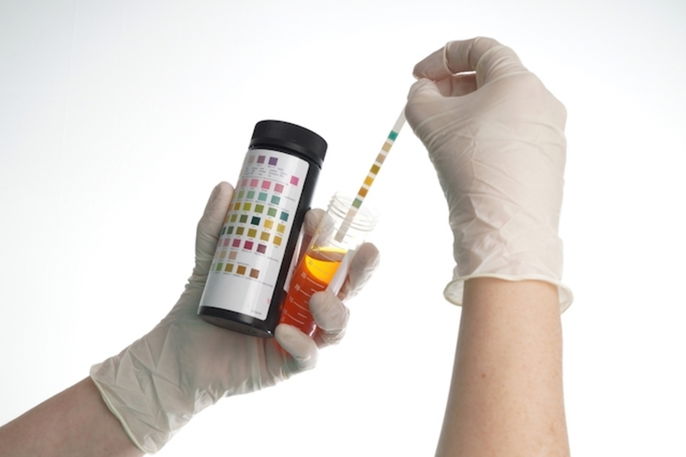What is it:
Hemoglobin in the urine occurs when red blood cells are destroyed and one of their components, hemoglobin, is excreted in the urine, giving it a reddish, transparent color.
The presence of hemoglobin in urine doesn't always cause symptoms and, therefore, most times it can only be detected after a urine analysis.
Hemoglobinuria, the scientific term used to describe this phenomenon, can occur in children, adults, and even pregnant women and is usually a result of kidney infections, kidney stones, or a more serious kidney disease such as pyelonephritis or cancer. Regardless, it is always important that a urologist assess each case to identify the cause and prescribe the best type of treatment.

Common causes
Hemoglobin in the urine is not an expected finding in a normal urine examination. However, hemoglobin can occur because of some situations, such as:
- Kidney problems, such as acute nephritis or pyelonephritis.
- Severe burns;
- Kidney cancer;
- Malaria;
- Transfusion reaction;
- Genitourinary tuberculosis;
- Sickle cell anemia;
- Strenuous physical activity;
- Hemolytic–uremic syndrome.
Additionally, the presence of hemoglobin in the urine may be due to excessive cold or paroxysmal nocturnal hemoglobinuria, a rare type of hemolytic anemia in which there is an alteration in the membrane of red blood cells, resulting in its destruction and the presence of red blood cells in the urine.
Read more about what causes blood in the urine and what to do.
Confirming a diagnosis
The presence of hemoglobin in the urine is positive when, after a chemical test with a reagent strip, signs, dashes or crosses appear on the strip. It is negative when there are no changes.
Generally, the more dashes or crosses, or the darker the test color on the strip, the greater the amount of blood in the urine. However, it’s always important to read the instructions on the reagent strip packaging, as the analysis of the results depends on the reagent strip manufacturer.
In addition to a test strip, you can also do a microscopic examination, through a sedimentoscopy. This test analyzes a urine sample through a microscope and detects the amount of blood present. In this case, less than 3 to 5 red blood cells per field or less than 10,000 cells per ml is considered normal.
Signs and symptoms
Hemoglobinuria doesn't always cause symptoms, however, there may be visible changes to the urine, such as becoming red and transparent. In severe cases, due to the loss of a large amount of hemoglobin, which is responsible for transporting oxygen and nutrients, people can feel easily tired, with fatigue and pallor, and even suffer from anemia.
Treatment options
Treatment for hemoglobin in the urine depends on the cause and should be guided by a urologist. During treatment, drugs such as antibiotics, anti-anemics or the application of a bladder catheter may be necessary.






























